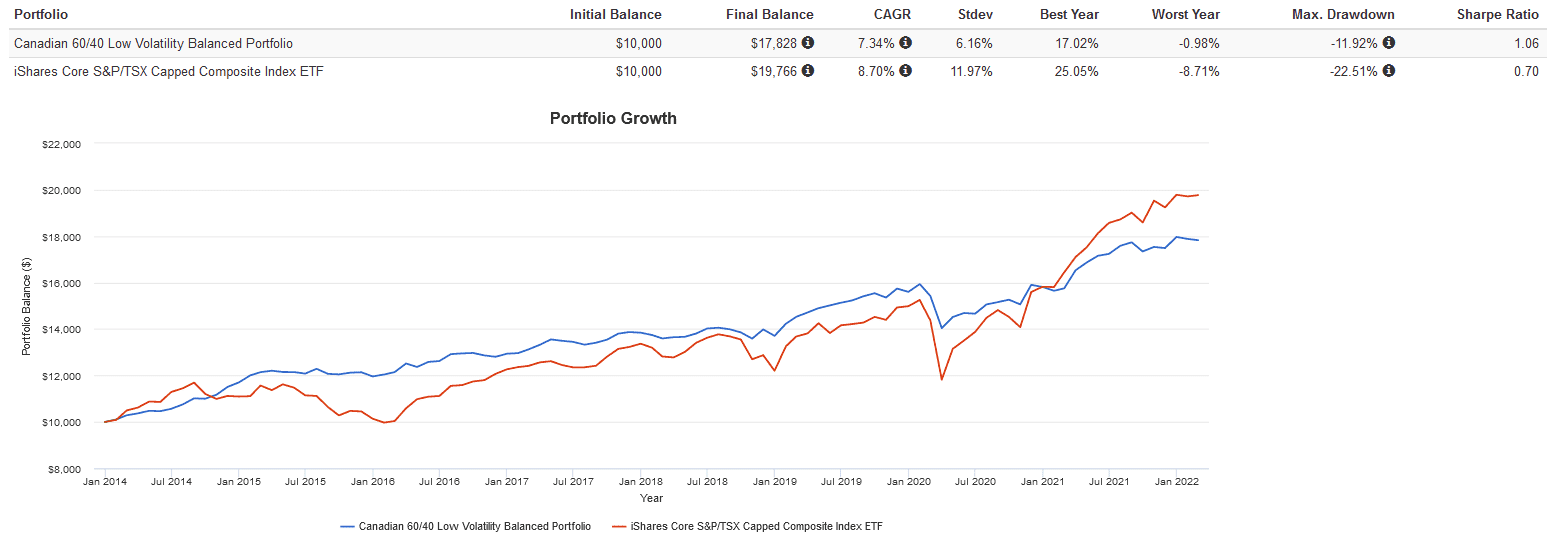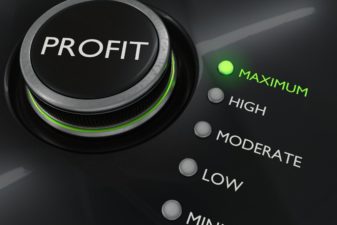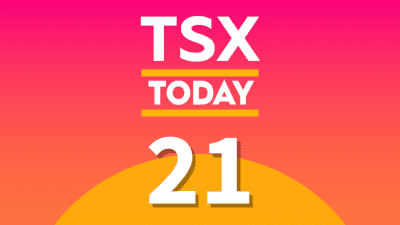Investors with a low risk tolerance, a shorter time horizon, or more modest investment objectives should favour preservation of capital over growth.
For these investors, the possibility of a market crash right before they retire can introduce sequence of return risk, potentially delaying retirement or crippling income potential. This must be taken into account when selecting an asset allocation.
Metrics like risk-adjusted returns, volatility, drawdowns, beta, and correlations all come into play. Picking and choosing asset classes that optimize this is critical to ensuring your investments succeed. Today, we’ll be going over construction of a balanced, minimal volatility portfolio suitable for low-risk investors.
What does low risk even mean, anyway?
The risk of our investment portfolio is measured with a few different metrics that all kind of work together to produce an overall risk profile.
First up is standard deviation. This is the percentage that your investments will fluctuate around their average return. For example, two separate portfolios both return 7% on average over 25 years, but the first has a standard deviation of 10% versus the second at 12%. The first portfolio will experience greater ups and downs, while the second will have a smoother ride.
The second is max drawdown and drawdown recovery time. This is a measure of the percentage our portfolio has historically declined from peak to bottom, and how long it took to get back to pre-crash levels. We want to keep drawdowns low and recovery time short, so our investments can get back to being profitable earlier.
Last is beta, a measure of how volatile a stock is compared to the market. The market has a beta of 1.00. A stock that swings more than the market has a beta that is greater than 1.00. A stock that moves less than the market has a beta less than 1.00. And stocks that move inversely to the market have a negative beta <0.00. We want to keep beta low, or even uncorrelated sometimes to reduce volatility.
How to construct a portfolio to mitigate these risks?
The lesson here is to keep the standard deviation, drawdown amount/time, and volatility of your portfolio low. Traditionally, this was accomplished by a balanced allocation of stocks combined with bonds via exchange-traded funds (ETFs).
For the stock allocation of your low-risk portfolio, I recommend BMO Low Volatility Canadian Equity ETF (TSX:ZLB). ZLB holds a portfolio of low-beta, blue-chip, large-cap stocks, and costs a management expense ratio (MER) of 0.35% to hold. The fund also has a annual yield of 2.36%.
The bond portion is more tricky. There is strong evidence out there to suggest that in today’s rising interest rate environment, bonds might not provide as much protection or gains.
Bond price are inversely relate to interest rates, with longer-duration bonds being more sensitive. In a rising rate environment, the negative correlation that bonds provided over the last three decades to help offset equity risk tends to fade, reducing their effectiveness as a hedge.
We need to seek alternatives here. My recommendation is a money market ETF like Purpose High Interest Savings ETF (TSX:PSA). PSA invests in high-interest savings accounts with Canadian banks and is as safe as it gets, with zero interest rate risk or default risk.
PSA does have a very low yield (0.81%) though, and may not outpace inflation. Still, it’s a marginally better solution than holding cash. We’re using PSA as ballast to smooth out fluctuations, and buy stocks cheap during a crash by rebalancing. The MER is 0.15%.
How has the portfolio performed?
A word of caution: the backtest results provide below are hypothetical in nature, do not reflect actual investment results, and are not guarantees of future results. Hypothetical returns do not reflect trading costs, transaction fees, or actual taxes due on investment returns.
From 2014 to present with all dividends reinvested, the Canadian 60/40 Low Volatility Balanced Portfolio performed exactly how we wanted it to.

Compared to the S&P/TSX Capped Composite Index, our portfolio had much lower standard deviation, drawdowns, and beta. The overall return was slightly lower, but the ride was much smoother, with a significantly better risk-adjusted return.










